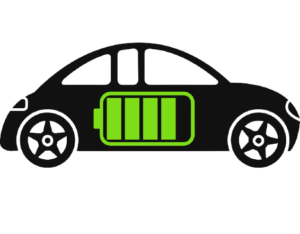HOW BATTERY ELECTRIC VEHICLES HAVE EVOLVED OVER TIME?

Although Battery Electric Vehicles are getting much-deserved attention now, they have existed for a long time. However, these used to be extremely expensive, which is why not everyone could afford them.
Electric Vehicles made their first appearance in the middle of the 19th century and eventually gathered the land speed record in 1900. However, these weren’t really very popular as compared to the 20th-century internal combustion vehicles. They served the purpose and played an important role in loading and freight equipment vehicles.
The fuel-powered vehicles were extremely efficient, but it was during the beginning of the 21st century that electric vehicles started gaining popularity too. The use of electric vehicles is proving to be extremely effective as they contribute to less pollution.
According to statistics, experts are assuming that by the end of 2040, over half of the total cars worldwide will be running on batteries only. So, here is looking back at the journey of electric vehicles, their history, and evolution.
1800s
There were inventors from several countries who started working on plans of battery-run vehicles already during the beginning of the 1800s. British inventor Robert Anderson gets the credit of developing the world’s first battery-run carriage in 1832. It was almost 50 years prior to the invention of a gasoline-run vehicle.
Soon, an Iowa chemist, William Morrison exhibits the very first battery-run model in America. It was, at that time nothing, but an electrified wagon when the demonstration took place in 1890. Again, in 1899, Camille Jenatzy, Belgian driver and car racer took the leap of faith and drove over the speed of 100 km/hour in an electric vehicle.
Camille, himself built that vehicle calling it La Jamais Contente, which translates to “Never Satisfied” in English. By the end of 1800, electric taxis were gaining a lot of popularity. However, these taxis were also the reason for the first motor fatality in American history. It was when a car hit Henry Bliss on September 13, 1899, in New York.
1900-1910s
About 33% of all vehicles on U.S. streets are electric, controlled through an organization of charging stations. Automakers market the vehicles to ladies, spiffing them up with extravagant upholstery, blossom jars, timekeepers, and even cosmetics packs. Organizations promote them as calmer, cleaner, and simpler to work than gas models. Henry Ford and Thomas Edison work on a “modest and practicable” electric vehicle that will “run for 100 miles,” Ford tells correspondents in 1914, yet they, in the end, forsake the task. Ferdinand Porsche – who built up his first vehicle, the electric P1, toward the finish of the earlier century – makes the world’s first gas and battery-fueled mixture.
1920s-1960s
The notoriety of electric vehicles decreases in view of interest for Ford’s mass-created Model T and other gas energized vehicles. By the mid-1930s, not many battery-fueled vehicles were left out and about.
Another utilization arose in 1954 when Lektro presented one of the main business electric golf trucks. In 1959, National Union Electric Corp. altered 100 Renault Dauphines to run on batteries; the new forms are called Henney Kilowatts. Just 47 are requested, chiefly by electric utilities. During the 1960s, different organizations, including General Motors and American Motors, produced ideal models because of developing worries about air contamination.
1970s-1980s
Battery power got limited time help in the 1970s as the world was watching NASA’s electric Lunar Roving Vehicle – designed and worked by Boeing and GM – skip on the moon. Later, during the same decade, the U.S. Division of Fuel and Energy investigated elective powers, with GM building up a model metropolitan electric vehicle around 1973 along with Sebring-Vanguard drawing out the CitiCar. However, restricted reach and execution issues obstruct inescapable acknowledgment, prodding work on battery innovation.
1990s
Fixing discharge rules cause auto firms to zero in progressively on option fuel vehicles. In 1997, GM presented the EV1, making more than 1,000 of the smooth two-seaters and renting them to clients as a market study. The principal mass-created cross breeds additionally go on special — Toyota’s Prius and Honda’s Insight — and Nissan sees its Altra EV minivan, controlled by lithium-particle batteries.
2000s
Despite the fact that drivers love them, GM annihilates – in a real sense – the majority of the EV1s when their leases terminate, and the market study closes in 2003. The adventure is chronicled in the narrative “Who Killed the Electric Car?” 2003 is additionally the year Marc Tarpenning and Martin Eberhard join Tesla Motors.
Elon Musk, PayPal’s prime supporter, drives underlying speculation of $7.5 million and becomes director of the board in 2004. (Musk tweets in 2017 that the obliteration of the GM vehicles started his advantage in an electric-vehicle organization) Tesla dispatched the Roadster sports vehicle in 2008; it’s the principal creation EV to utilize lithium-particle battery cells.
2010s
Nissan’s Leaf goes discounted in 2010; it will end up being the world’s smash hit the electric vehicle. Tesla adds the Model S vehicle, Model X SUV, and lower-estimated Model 3. Musk likewise reports intends to construct an electric Semi truck, which will rival haulers from organizations, for example, Daimler, producer of Mercedes-Benz extravagance vehicles, and China’s BYD, supported by Warren Buffett.
China’s emphasis on lessening exhaust clouds and cutting oil imports makes it the world’s greatest EV market, prodding many nearby producers and new businesses to battle for share, including XPeng Motors and SAIC Motor. Repeating La Jamais Contente’s 1899 speed record, Volkswagen’s I.D. R establishes another precedent in June 2018 for the exceptionally old Pikes Peak International Hill Climb, dashing 12.42 miles quickly in 57.148 seconds. (In 1916 the triumphant time was 20 minutes and 55.6 seconds.)

